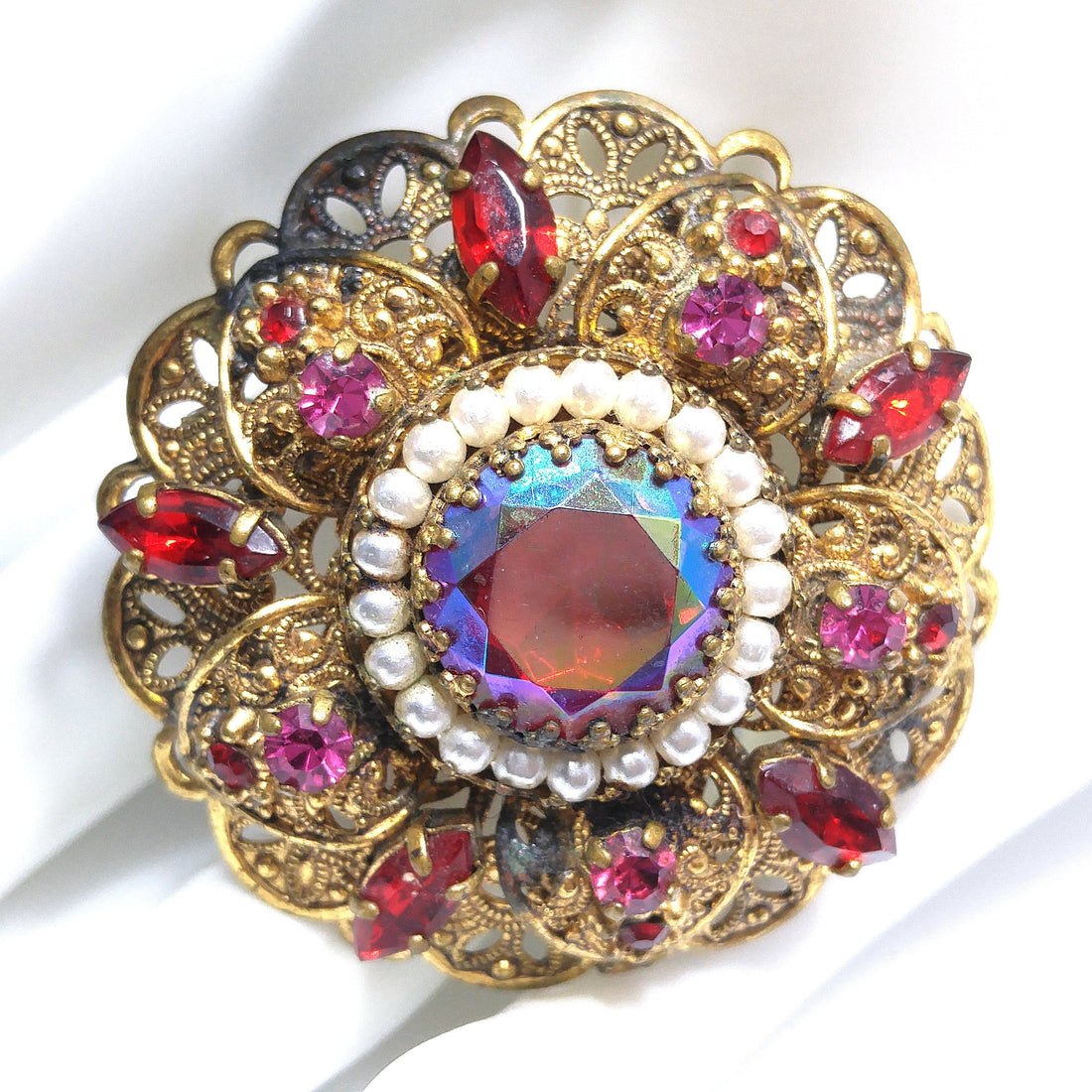
Western Germany vs. Germany Vintage Jewelry: What’s the Difference?
If you’ve spent time browsing vintage jewelry—whether online, at estate sales, or in grandma’s jewelry box—you might have noticed pieces marked “Western Germany” and others simply marked “Germany.” At first glance, they might seem the same, but those little labels actually tell a fascinating story about history, craftsmanship, and post-war identity.
So what’s the difference? Let’s take a quick, friendly tour through vintage jewelry and European history to find out!
A Quick History Lesson (Don’t Worry, It’s Fun!)
After World War II, Germany was divided into two separate countries:
West Germany (Federal Republic of Germany)
East Germany (German Democratic Republic)
This division lasted from 1949 to 1990. During that time, most jewelry marked “Western Germany” was made in—you guessed it—West Germany. It was a way to indicate origin, especially for export purposes, as the country was split and needed clear labeling.
So if you see “Western Germany” on a vintage brooch, clip-on earrings, or a beaded necklace, it likely dates from the 1950s to late 1980s—the Cold War era.
Jewelry Just Marked “Germany”
Pieces marked simply as “Germany” could mean a few different things:
Pre-WWII (Before 1945): Older vintage or antique pieces often just say “Germany,” and may be from the 1920s, 30s, or earlier.
Post-Reunification (After 1990): After East and West Germany reunited in 1990, manufacturers went back to labeling jewelry as “Germany.”
Generic or Unspecified Timeframe: Sometimes manufacturers didn’t distinguish between East or West, especially for domestic sales or before labeling laws became stricter.
Note:
🟡 “Germany” could mean pre-1949 or post-1990.
🟢 “Western Germany” almost always means 1949–1990.
What About East Germany Jewelry?
East Germany also produced jewelry, but it was often not widely exported, and much of it was mass-produced with more modest materials. If marked at all, it might say “GDR” (German Democratic Republic) or “Made in East Germany.” These are much rarer to find in vintage shops outside of Europe.
Why Does This Matter for Collectors?
Knowing the difference between these markings helps you:
Date your vintage finds more accurately
Understand the historical context behind the piece
Spot authentic mid-century costume jewelry
Appreciate the craftsmanship typical of West German jewelry (think: high-quality glass beads, creative designs, and meticulous assembly)
Western Germany jewelry, in particular, is known for its colorful, whimsical, and high-quality costume pieces, especially from the 1950s and 60s.
Things to Remember
Next time you spot a beautiful vintage brooch or a glitzy beaded necklace marked “Western Germany,” know that you’re holding a piece of Cold War history—crafted with care during a unique moment in time. Whether you're a collector, seller, or just someone who loves a good story behind their accessories, these small markings open a fascinating window into the past.
So wear your vintage jewelry with pride—you’re carrying a little bit of European history!